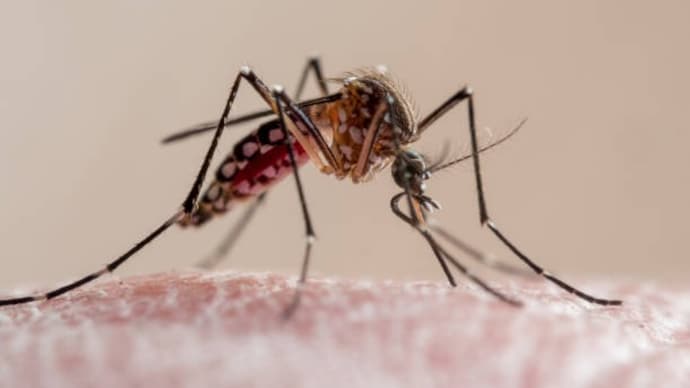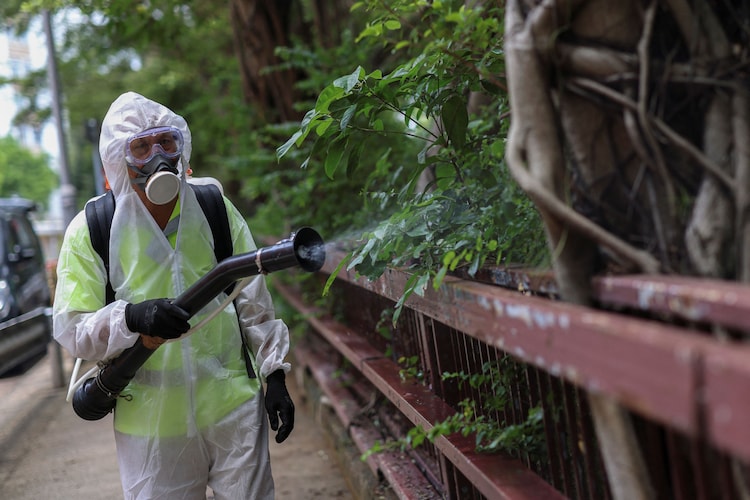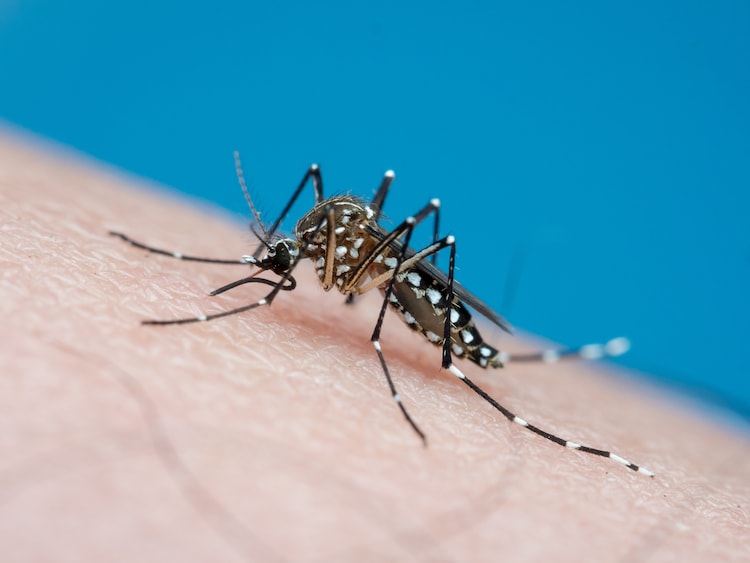Chikungunya cases are increasing: What can India learn from China’s reaction
Chikungunya cases are in mid -2012 in India and many Asian countries. China’s aggressive mosquito control and strict public health measures can be a lesson for India.

In short
- Chikungunya cases have increased rapidly in Mumbai in July this compared to June.
- By the beginning of July 2025, more than 34,000 Chikungunya cases were reported in Asia
- China deploys drones and mosquito -eating fish to control the spread of viruses
Chikungunya cases are increasing in India, especially in cities like Mumbai, where hospitals have reported noticeable spikes in patients in July compared to June. But India is not alone. Many countries of Asia, including Sri Lanka, Mauritius, Pakistan and China, are showing symptoms of epidemic-level transmission in parts of South-East Asia, reporting the increasing number of cases.
According to the European Center for Disease Prevention and Control, China alone has recorded around 7,000 chikungunya infections since late June. Overall, by the beginning of July 2025, more than 34,000 cases were reported in Asia.
What is Chikungunya?
Chikungunya is a viral disease spread by Aedes mosquitoes. It is the same type that spreads dengue. The disease causes sudden high fever, joint pain, fatigue and rashes. Although it is rarely fatal, chikungunya can lead to long -term combined problems, especially in older adults and people with pre -existing health conditions.
In India, the disease has returned regularly, usually with outbreak in Delhi, Maharashtra, Karnataka and Tamil Nadu. A major challenge in dealing with these outbreaks is that many cases are set to determined or are too late, making it difficult to prevent the virus from spreading quickly.
China’s aggressive strategy
In contrast, China is using a wide range of equipment to prevent the virus from spreading.
The drone is being used to detect areas where mosquitoes are breed. At the same time, scientists are releasing large mosquitoes, known as “elephants mosquitoes”, who do not bite humans, but whose larvae feed on small mosquitoes, carry the virus, according to a report by the New York Times.
Chinese officials are also taking strict steps at the community level. According to a BBC report, people in affected areas have been asked to remove all standing water around their homes, even water collected in flowers, coffee machines or empty bottles.
If residents do not follow these instructions, they can be fined up to 10,000 yuan (about 1.2 lakh rupees), and in more severe cases, may face criminal allegations for not cooperating with public health measures.

In some places such as Foshan, infected persons are being transferred to quarantine wards covered with mosquito nets to prevent further transmission. Some residents have said that they were designed to pay for their treatment.
Soldiers in the mask are spraying pesticides on parks and roads. Thousands of mosquito -eating fish have been released into the ponds.
In the construction of the entrance, the workers sprayed mosquito disturbances on the residents before entering. Volunteers wearing red vests go through the door, check the stable water and warns to clean the houses. Refusing compliance may cause fines or criminal charges under China’s laws for infectious disease control.
Does India’s reaction require a change?
There is a system in India called the Integrated Disease Monitoring Program (IDSP), but most experts believe it is usually reactive rather than being active. Unlike China, there is very little real -time coordination between hospitals, laboratories and health departments.
India tracks mosquito population in some districts, but data is not always used to predict or prevent outbreaks. On the other hand, China uses a digital dashboard that can be accessed by both local and central officials, which helps them make quick decisions.

China also takes border monitoring seriously. In 2019, the country discovered a chikungunya case from Myanmar at a border post in Yunnan and quickly worked to prevent it from spreading. Travel screenings using thermal scanners, digital tracking and health announcements are part of regular check -up for international passengers. In India, similar imported matters often go to anyone’s attention.
What can people do to protect themselves?
Chikungunya has no cure, but there are ways to protect yourself. Wearing long -sleeved clothes, using mosquito -saving disturbances, and living indoors in air -conditioned or screen rooms can reduce the risk of bite. It is also important to remove any standing water around your house to prevent mosquitoes from breeding.
If one gets infected, relaxes, drinks a lot of fluids, and taking safe painkillers can help reduce symptoms. However, the US Center for Disease Control and Prevention (CDC) recommends avoiding some drugs such as non-steroidal anti-inflammatory drugs (NSAIDs) until dengue is denied, as they can increase the risk of bleeding.






